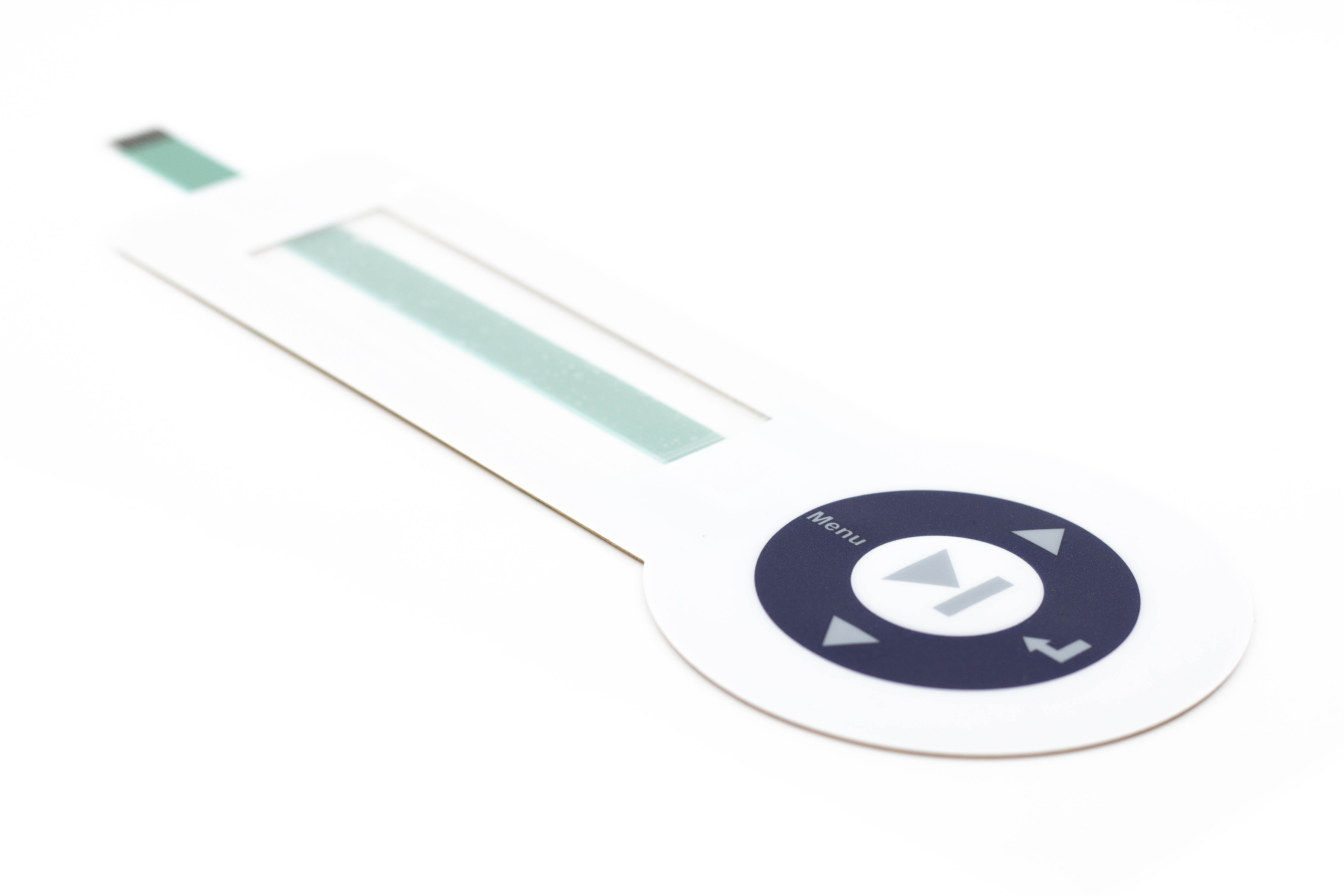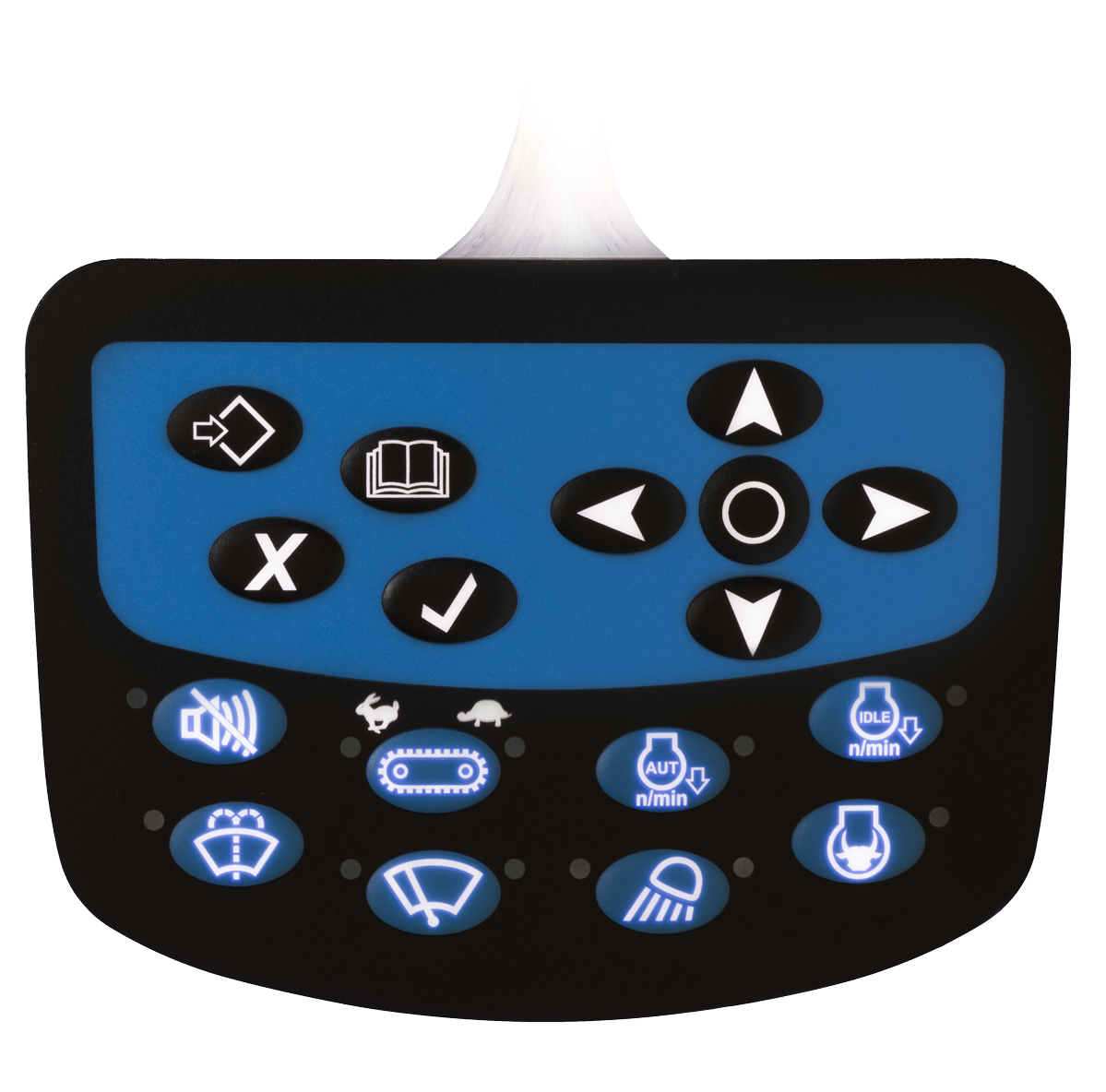A Comprehensive Guide to Membrane Switches for Product Designers
A Comprehensive Guide to Membrane Switches for Product Designers
Blog Article
Comprehending the Relevance of Membrane Switches in Customer Interfaces
Membrane switches are integral elements in the design of reliable interface, assisting in not just performance yet likewise boosting aesthetic allure and individual communication. Their one-of-a-kind attributes, such as resistance to adjustable styles and ecological aspects, make them suitable for a diverse array of applications across multiple industries. As we discover the numerous benefits and future patterns connected with Membrane technology, it becomes clear that these buttons are greater than just elements; they represent a convergence of development and usefulness. The effects of this innovation on user experience are worth checking out even more.
What Are Membrane Buttons?

The spacer layer, which includes sticky residential or commercial properties, enables the splitting up of the circuit layer from the overlay, ensuring that the button continues to be in a non-activated state till pressed. When stress is related to the overlay, it compresses the spacer layer, connecting the space and finishing the circuit in the underlying layer. This layout not only decreases the physical space needed for typical mechanical buttons however also improves the toughness of the gadget, as Membrane buttons are usually resistant to dust, dampness, and other environmental variables.
Commonly discovered in applications varying from consumer electronics to clinical devices, Membrane switches are essential to modern innovation, giving a user-friendly and reliable user interface that aligns with contemporary layout requirements.
Benefits of Membrane Buttons
While numerous button technologies exist, Membrane Switches offer distinctive advantages that make them specifically preferable in different applications. One of the primary advantages of Membrane switches is their compact style, which permits for space-saving applications in tools where realty is restricted. Their thin profile not just improves aesthetic allure yet also promotes lightweight construction.
One more significant benefit is their resistance to environmental aspects. Membrane switches are normally sealed against dampness, dust, and contaminants, making them optimal for usage sought after environments, such as clinical devices and industrial tools. This sturdiness expands the life-span of the switch, decreasing maintenance prices and boosting reliability.
Moreover, Membrane switches can be personalized to meet certain design requirements, incorporating special graphics and shades that enhance individual interaction. Their tactile feedback choices can also be customized to provide a satisfying user experience. Additionally, Membrane switches are cost-efficient, particularly in high-volume applications, as they can be created effectively.
Applications in Various Industries

In the consumer electronics industry, Membrane switches are widespread in devices such as microwaves, washing machines, and remote controls. Their responsive comments and visual options boost user experience while offering a streamlined, modern appearance. Additionally, automobile makers use Membrane switches in control panel controls and infotainment systems, where space is limited, and user involvement is vital.
Moreover, the industrial field leverages Membrane switches in control panels for machinery and tools, allowing for user-friendly procedure in often harsh environments. Their resistance to chemicals and wetness guarantees long life and reliability in these applications. Overall, the adaptability of Membrane Switches adds considerably to their prevalent usage, making them important in numerous technical domain names.
Design Considerations for Membrane Switches

When developing Membrane switches, a number of crucial factors to consider need to be thought about to make sure ideal capability and customer experience. The selection site here of products is critical; picking long lasting, high-quality substratums can enhance the switch's longevity and resistance to environmental variables such as moisture and temperature level variations.
Second of all, the layout of the graphic overlay should focus on clarity and simplicity of use. Icons and text have to be legible, and the format ought to promote intuitive interaction (membrane switches). Additionally, responsive responses is vital; incorporating a responsive dome or various other devices can enhance the customer experience by supplying physical verification of activation
An additional essential element is the switch's electric efficiency. Developers must guarantee that the conductive traces are properly made to reduce resistance and prevent signal disturbance. This involves evaluating the called for actuation force and making sure compatibility with the electronic components they will user interface with.
Future Patterns in Membrane Modern Technology
As modern technology continues to advance, Membrane switches are positioned to progress substantially, driven by innovations in materials and producing techniques. One arising fad is the unification of sophisticated products, such as conductive inks and flexible substratums, which boost durability and minimize the overall weight of Membrane switches. These materials not only improve the tactile action but also allow for the design of buttons that can endure harsher ecological problems.
Furthermore, the integration of touch-sensitive innovations is changing standard Membrane Switches into even more interactive customer interfaces. Capacitive touch sensors embedded within Membrane button panels can give a much more intuitive and receptive individual experience, straightening with the expanding need for sleek, modern-day designs in customer electronics.
Furthermore, innovations in printing methods, such as digital and 3D printing, enable rapid prototyping and personalization of Membrane buttons. This flexibility allows producers to respond faster to market demands and consumer preferences.
Last but not least, sustainability visit here is coming to be a substantial focus, with manufacturers exploring green products and processes. As these trends unfold, the future of Membrane innovation promises improved functionality, aesthetic allure, and environmental responsibility, strengthening their duty in sophisticated interface throughout numerous markets.
Conclusion
In final thought, Membrane Switches stand why not check here for a crucial element in the style of individual interfaces, combining capability with visual flexibility. As improvements in innovation proceed, the evolution of Membrane buttons is expected to additional improve individual interfaces, driving technology and improving functionality in a significantly complicated technical landscape.
Membrane buttons are essential components in the layout of effective individual interfaces, promoting not just performance however additionally enhancing aesthetic appeal and user interaction.Membrane Switches offer as an important component in different customer interfaces, facilitating a seamless interaction in between customers and digital devices.While numerous button modern technologies exist, Membrane Switches deal unique benefits that make them especially desirable in various applications.In addition, Membrane switches can be tailored to meet particular layout needs, integrating distinct graphics and shades that boost individual interaction.In verdict, Membrane Switches represent a crucial component in the layout of individual interfaces, integrating functionality with visual adaptability.
Report this page